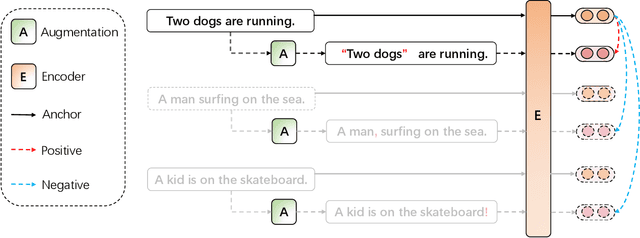Dongsheng Zhu
VisLingInstruct: Elevating Zero-Shot Learning in Multi-Modal Language Models with Autonomous Instruction Optimization
Feb 12, 2024Abstract:This paper presents VisLingInstruct, a novel approach to advancing Multi-Modal Language Models (MMLMs) in zero-shot learning. Current MMLMs show impressive zero-shot abilities in multi-modal tasks, but their performance depends heavily on the quality of instructions. VisLingInstruct tackles this by autonomously evaluating and optimizing instructional texts through In-Context Learning, improving the synergy between visual perception and linguistic expression in MMLMs. Alongside this instructional advancement, we have also optimized the visual feature extraction modules in MMLMs, further augmenting their responsiveness to textual cues. Our comprehensive experiments on MMLMs, based on FlanT5 and Vicuna, show that VisLingInstruct significantly improves zero-shot performance in visual multi-modal tasks. Notably, it achieves a 13.1% and 9% increase in accuracy over the prior state-of-the-art on the TextVQA and HatefulMemes datasets.
SDA: Simple Discrete Augmentation for Contrastive Sentence Representation Learning
Oct 08, 2022



Abstract:Contrastive learning methods achieve state-of-the-art results in unsupervised sentence representation learning. Although playing essential roles in contrastive learning, data augmentation methods applied on sentences have not been fully explored. Current SOTA method SimCSE utilizes a simple dropout mechanism as continuous augmentation which outperforms discrete augmentations such as cropping, word deletion and synonym replacement. To understand the underlying rationales, we revisit existing approaches and attempt to hypothesize the desiderata of reasonable data augmentation methods: balance of semantic consistency and expression diversity. Based on the hypothesis, we propose three simple yet effective discrete sentence augmentation methods, i.e., punctuation insertion, affirmative auxiliary and double negation. The punctuation marks, auxiliaries and negative words act as minimal noises in lexical level to produce diverse sentence expressions. Unlike traditional augmentation methods which randomly modify the sentence, our augmentation rules are well designed for generating semantically consistent and grammatically correct sentences. We conduct extensive experiments on both English and Chinese semantic textual similarity datasets. The results show the robustness and effectiveness of the proposed methods.
What Makes Pre-trained Language Models Better Zero/Few-shot Learners?
Sep 30, 2022



Abstract:In this paper, we propose a theoretical framework to explain the efficacy of prompt learning in zero/few-shot scenarios. First, we prove that conventional pre-training and fine-tuning paradigm fails in few-shot scenarios due to overfitting the unrepresentative labelled data. We then detail the assumption that prompt learning is more effective because it empowers pre-trained language model that is built upon massive text corpora, as well as domain-related human knowledge to participate more in prediction and thereby reduces the impact of limited label information provided by the small training set. We further hypothesize that language discrepancy can measure the quality of prompting. Comprehensive experiments are performed to verify our assumptions. More remarkably, inspired by the theoretical framework, we propose an annotation-agnostic template selection method based on perplexity, which enables us to ``forecast'' the prompting performance in advance. This approach is especially encouraging because existing work still relies on development set to post-hoc evaluate templates. Experiments show that this method leads to significant prediction benefits compared to state-of-the-art zero-shot methods.
 Add to Chrome
Add to Chrome Add to Firefox
Add to Firefox Add to Edge
Add to Edge